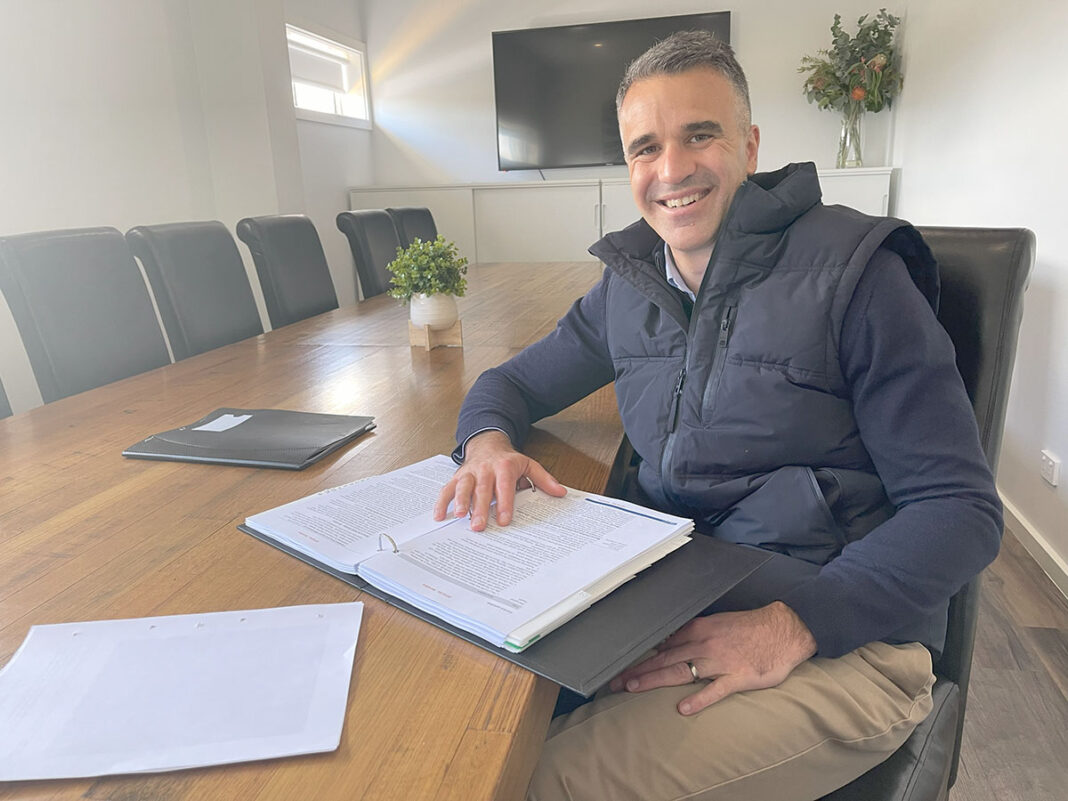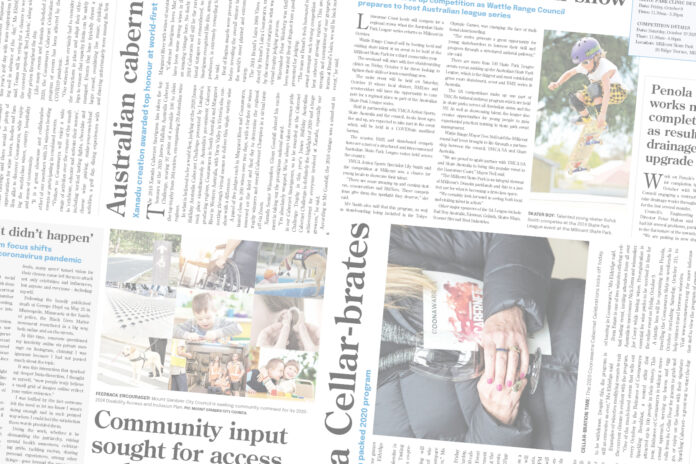What are the benefits for the Limestone Coast in regard to the $500m university merger?
PREMIER: So one of the things that we have explicitly committed to as part of the agreement that we have reached is to invest in three separate funds but two are directly material to the South East. The two separate funds, one is $125m, the other will be in the order of $40m … one for Flinders Uni and one for the combined university.
Both of which are specifically allocated to getting more young people from diverse backgrounds to university and one of the agreements that we have reached with the crossbench is for an explicit reference to those two funds being about more kids from regional South Australia getting access to uni and it is a genuine issue.
Obviously there are kids that finish high school in regional South Australia, and they go to university but only where basically they or their parents can afford college and that is expensive, it is not accessible to everyone.
And you cannot put your college fees on HECS debt.
So by providing $165m worth of perpetual funds, so just to explain it, that those two funds are invested and the return on the capital is allocated on an annual basis to getting more kids into scholarships, paying a bursary including to regional kids to access university that otherwise would not be able to afford it, so that is a real world impact that has the potential to grow into the future.
It should not be seen as a one-off investment.
In terms of the new university, the whole of the state objective … is just to have a top 100 university in the state resulting in more R&D funding, which we do need across a range of industries, including industries that do participate down here.
In regard to the Mount Gambier campus there is a commitment from the university to maintain all of its existing presence, it will only be on top of that.
Limestone Coast roads – you have had a drive through the region today and I’d like to know how you found them and your thoughts of establishing a permanent maintenance depot in Mount Gambier?
PREMIER: We are open minded to anything that will make a material difference. The Fulton Hogan contract has been in place for a while as the principal one responsible for road maintenance in the area. The more on-site capital, the greater the return on investment in terms of its capacity to deliver economies of scale, more return on whatever the labour costs are associated with road maintenance. That specific proposition I know has been raised.
We’re not making a commitment to that today.
But I think there is a consciousness from the department that given the economic growth and economic activity in the area more broadly, forestry is doing well, aquaculture is doing well and we hope it continues to grow with Chinese tariffs potentially being reduced, the agriculture sector and the primary production sector more broadly, that is going to put a greater burden on freight.
Freight has the most substantial impact on the road network and so needs for roads investment and maintenance are real, we acknowledge that.
One of the things the Minister is doing while he is down here is making sure he meets with key organisations, key stakeholders including industry representatives about how that might look.
Now that’s not to say we are committing to that Mount Gambier specific proposition, it’s just that we know it’s one of a few different options that we are willing to contemplate.
Some roads are far better than others.
But when you come across a doozy it stands out.
I can understand people who rely on those specific roads wanting to see more attention being paid.
Can you please update us on the progress of the Technical College to be built in Mount Gambier?
PREMIER: It’s a big investment. We commissioned Kevin Scarce to undertake a review of making sure that we get our best bang for our buck. It’s obviously a very substantial investment when you put it all together, there’s the technical college, there’s the TAFE investment and the Centre of Excellence for the forestry industry. Now, when we put those three commitments in isolation of each other they are significant and we want to get it right.
But what we have recognised is that this is a case where the whole is potentially more valuable than the sum of its parts, which is why we want to coordinate an approach.
We are close to making an announcement about who is going to lead that effort.
One of the recommendations that came out of the Kevin Scarce review into the project … is there needs to be one person who is accountable for bringing those three efforts together to get the program right over the next two years.
It’s a big investment and we do want to get it right.
It’s an investment in the skills that are required to achieve the economic growth for the sector more broadly and one needs to work with the other.
We want kids to be able to go to high school, graduate with SACE, with some trade qualifications that may lead them to go to a more higher end qualification through TAFE or through the Centre of Excellence or the university.
And having that ecosystem working is to the benefit of lifting up the productivity of the region as a whole.
But we want to, before the end of the year, appoint that person who is in charge, but in terms of the broader works, it has to start next year with the view of being completed by the summer of 2025/26.
What progress has been made on the Mount Gambier Hospital upgrading?
PREMIER: There is still more to be done. There’s the investment in Mount Gambier of $24m which has got a few different elements, there’s the mental health piece, which is 90% supposed to be completed by the end of December this year in terms of the mental health sub acute unit.
In terms of the A&E in Mount Gambier which is the bulk of the $24m, stakeholder meetings and model of care development are under way.
The bulk of that is expected to be completed by 2023.
It goes to tender early next year.
What is the latest information regarding the proposal for radiation therapy services in Mount Gambier?
PREMIER: We have got the review under way for the radiation therapy. There is the feasibility study which we funded to the tune of almost $100,000 which is the first time we have actually properly investigated how this might work, which is a serious effort.
One of the biggest challenges we have got and continue to have is workforce, and that is a sustained challenge that is not going away anytime soon.
Workforce challenges in the health sector in the region, they have been with us for a while, but now it’s also with us in Adelaide. Frankly, it’s across the entire country. There’s a thing called the Kruk Review, which has come from the federal level, which has been focused on what we’re doing in the health workforce more broadly, to do a whole range of changes, particularly around skilled migration coming from countries like the UK for instance, but also more readily acknowledging and a streamlined approval pathway to take credentials that have been issued overseas and making sure they are Australian compliant has been pretty important.
At the moment it’s an absolute quagmire for anyone who has got a health qualification from serious health services to be able to get their Australian qualifications, so streamlining that is mission critical.
But we also have to be investing more in the development of the health workforce domestically as well.
But that’s a work in progress.
We have got a national Cabinet meeting in the beginning of December and this is one of the key areas of focus, and a central part of it is what we’re doing in regional communities in terms of workforce.
The State Government has announced its opposition to the proposed offshore windfarm earmarked for the coastline between Warrnambool and Port MacDonnell.
What will you do if the Federal Government ultimately approves it?
PREMIER: We have written a submission formally. Let’s wait and see the outcome. I think Minister Bowen is receptive to community feedback.
South Australia has already done a lot of heavy lifting when it comes to the transition towards renewables, including in this community itself.
We made our representations as a State Government to the Commonwealth, which was pretty strong, and our contribution is not just because of the community feedback, although that’s been pretty important, but we want to think about the science.
The Bonney Upwelling is a big deal, it’s important for the aquaculture sector in the region, that’s an important industry to the state as a whole and something that’s worthy of State Government protection.
The government seems to have formed a good working relationship with Liberal turned Independent Member for MacKillop Nick McBride.
How would you describe your relationship now he’s an Independent?
PREMIER: Nick is widely regarded as being a gentleman within the parliament. That’s the way he conducts himself. He is pretty straight down the line about advocating for his local community’s interests.
He did that when he was a member of the Liberal Party.
He’s now doing that as an Independent.
I think people would be aware that Nick’s lineage could not be further from the Labor Party if he tried, Nick and his family have been Liberal Party royalty.
My personal relationship with Nick is strong.
We get on well, clearly we do not agree on everything.
But I just respect the way he goes about his business.
And I said that when he was a member of the Liberal Party, so I have not changed my approach to dealing with Nick because he’s left the Liberal Party, he’s made that decision for his own reasons.
It was pretty obvious to me going back years that former Labor governments have not given this region the attention it deserves.
It’s one of the most economically productive regions in the state, let alone the fact that it’s one of the most populated and one of the fastest growing.
So whether it be in Mount Gambier or MacKillop … I have said repeatedly that I do not think it’s a case of the Limestone Coast needing Adelaide, I actually think it’s a case of Adelaide needing the Limestone Coast.
When this region does well, the state does well, the country does well.
So why would not we want to invest in economic uplift, that does not mean we can do everything, but we are serious about it.
The announcement we made today on the telecommunications is a serious example. This is something that Nick and Troy (Bell) have been banging on about forever to do with telecommunications.
But it’s not just about convenience of constituents.
It’s actually about the economic productivity of the region.
The internet of things these days affects everything.
The way the forestry industry operates, the way the agricultural sector operates, the way that pivots operate versus other machinery on a farm, it’s all interrelated and internet connectivity matters.
We want to improve the productivity more broadly … so this is as much an investment in the economic productivity of the region more broadly, which is what as a government we have to have an interest in.
However I digress, so the way Nick conducts himself, the way the Troy conducts himself, is about the region’s interests, which is our interests, which should be everybody’s interests.




